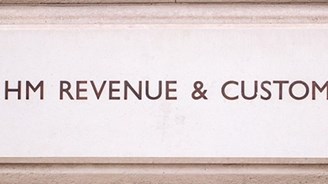Flat Rate Scheme - don’t let your clients get caught out by the 16.5% limited costs trader rate

The announcement of 'anti-avoidance' measures for the Flat Rate Scheme (FRS) to tackle abuse will create complexity for some businesses, or for you as their agent.
The additional tax cost may result in some traders choosing to:
- cease to operate the FRS or
- opt to deregister from VAT altogether where they are under the VAT threshold.
Under the FRS VAT due is calculated by applying a predetermined flat rate percentage to the business turnover of the VAT period. For some very small businesses including those trading below the annual VAT registration threshold of £83,000, it has been worthwhile registering for VAT and operating the scheme. Effectively these traders charge their customers VAT at 20% on the services they supply but only pay over VAT at an effective maximum rate of 17.4%. They are therefore able to keep a minimum of 2.6% of the VAT paid by their customers. This is set out in the following example:
| Amount billed to customer | £1,000 plus VAT at 20% = £1,200 |
| Amount due to HMRC under FRS using the current highest percentage of 14.5% | £1,200 x 14.5% = £174 |
| Effective rate on VAT exclusive amount billed to customer | £174 / £1,000 = 17.4% |
| VAT which can be retained by trader | £200 - £174 = £26 (2.6% of £1,000) |
Where the relevant FRS percentage is lower than 14.5% the effective percentage of VAT which can be retained could be significantly more.
The government have commented that where businesses with 'limited costs' register for VAT and use the FRS, there could be a cash advantage. This is because they use the flat rate appropriate to their trade sector but have significantly lower costs than most small businesses in that sector. They have therefore introduced a new flat rate of 16.5% for qualifying businesses with limited costs. The government estimate that of the 411,000 businesses using the FRS, 123,000 have limited costs and will be affected by these changes.
If a trader is caught by the new anti avoidance rules for limited cost traders then they will be in the following position:
| Amount billed to customer | £1,000 plus VAT at 20% = £1,200 |
| Amount due to HMRC under FRS using the limited cost trader percentage of 16.5% | £1,200 x 16.5% = £198 |
| Effective rate on VAT exclusive amount billed to customer | £198 / £1,000 = 19.8% |
| VAT which can be retained by trader | £200 - £198 = £2 (0.2% of £1,000) |
The VAT retained by a trader in this position may mean that it would be more appropriate for them to change to account for VAT on the normal basis, being liable to pay over to HMRC output VAT on sales less input VAT on purchases. For very small traders, with turnover of below the VAT de-registration threshold, it may be appropriate to deregister from VAT.
The costs to businesses shown in the government's technical notes are as clear as mud but suffice to say lots of those 123,000 businesses will be deregistering (where turnover is low enough), using the test and perhaps paying the new percentage ( the calculation is done each time a VAT return is completed) or operating normal VAT.
The Technical note states that businesses have 8 weeks to comment on the draft secondary legislation published on 5 December 2016. HMRC will introduce an online tool to help businesses decide whether or not they should use the new 16.5% rate.
HMRC also state that they communicate with affected businesses regularly between now and 1 April 2017 and it would be prudent to start identifying your clients now, including builders and those operating in the other services categories, and start planning to advise these clients.
We have written a client letter explaining the changes which is available to purchase here. The letter will be available by the end of the second week in January. We will of course update you and the letter when the legislation becomes final.



